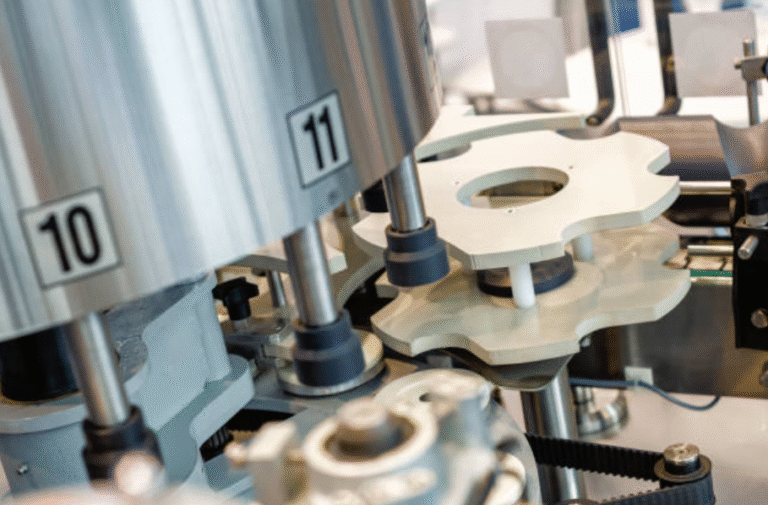Motor Operated Valves In Hazardous Locations: Safety Features And Compliance Guidelines

Hazardous locations in the oil and gas sector, chemical processing, and power generation industries offer unique challenges for operations. The safety requirements for equipment like motor operated valves is always on the higher end to guarantee safety for people and ensure system dependability. Choosing the right actuator valve impacts not only the operational efficiency of the business, but also regulatory compliance and stress management for the company.
This article looks into the essential safety aspects of motor-operated valves fulfilling requirements for hazardous environments, as well as simplified safety standards—for B2B audiences responsible for industrial management.
Requirements for Hazardous Locations and Actuated Valves
Hazardous locations in the context of gases, vapors, dust, or fibers refer to an area where the presence of explosive elements can lead to potential combustion. The construction of equipment such as actuator valves designed for this purpose has to be able to control sources that could potentially ignite.
The following are the three classification systems that recognize hazardous zones:
- Classifications of National Electrical Code (NEC) Consumables for North America
- European ATEX Directives
- IECEx Standards for international use
Electric motors driving valves installed in Dangerous Zones need to meet these classification systems to pose no danger. Basic requirements cover the use of anti-explosion barrier materials, intrinsically safe designs, and other relevant standards.
Safety Parameters of Motor Operated Valves for Hazardous Area Service
When working with motors operated valves put in place at dangerous areas, it is essential that proper safety devices are incorporated in order to avoid accidents and operational breakdowns.
Ex-Proof Enclosures
The most impactful safety feature of motor operated valves is hysterical security. This refers to anti-explosion enclosures of windows. The enclosures are built in such a way the explosion, if any internally contained, does not reach outside and may cause further damage.
Some benefits include:
- Arrest possibility of fire.
- Shielding of outer wiring sand plants.
- Valid licenses form FORCE Act, ATEX and other consortiums.
Regulatory explosion proof enclosures are vital for use in Class I, Division 1 places where there is an almost constant presence of flammable fuels.
Designing for Intrinsic Safety
The valves the actuator employs function with limited electrical energy, for it is contained at a level too low to cause any conflagration. This design is pivotal for areas where even faint sparks could prove to be disastrous.
Benefits of intrinsically safe actuator valves include:
- Less stringent requirements for bulky protective shielding.
- Streamlined maintenance and inspection procedures.
- Increased safety risk for staff serving during operation and servicing.
Protection Against Harsh Conditions IP Ratings
Motor operated valves for hazardous environments must offer protection against water, dust and even chemical intrusion. High IP (Ingress Protection) ratings, typically IP67: or above are standard for such valves.
Powerful sealing is essential in averting undesirable external particles from gaining access into the actuator and also reduce the chances of dery electrical failure creating unsafe conditions.
See Also: The Future of Biometric Technology: Security and Privacy
Protection from heat and overload
Motor-operated valves that deal with severe operating conditions must guarantee exceptional protection from possible chemical exposure. These and many modern functionalities such as temperature sensors and automatic trip systems are becoming more prevalent in contemporary actuator valves designed for dangerous places.
Emergency Shutdown (ESD) Functions
In scenarios like a gas leak or fire, the valve must take a safe position (fail-close or fail-open) without any delay.
The addition of ESD controls to every motor operated valve is said to improve safety at the plant by:
- Adding ability to conduct automated and far-off shutdowns.
- Enhancing safety for people and machines.
- Containment of dangerous substances from accidental release.
Compliance Standards for
Motor Operated Valves Within Hazardous Areas
When dealing with areas classified as hazardous, there/use motor operated valves, compliance with set standards becomes mandatory. These documents ensure that products abide by fundamental safety, performance, and quality standards.
NEC, and UL Standards(North America)
The National Electric Code (NEC) sets out Classes, Divisions and Groups which put into categories places that can be hazardous. Each Operated motor valve must have specific UL listed or certified stamps of these codes approved to guarantee them.
Some listed necessities were also brought for lower mechanics like:
- Proof against explosion (Grade I, Part 1).
- Proof against dust ignition whereby (Grade II, Part 1).
ATEX Directives (European Union)
In the EU, machines and other pieces of hardware meant to be used in a likely explosive atmosphere must have ATEX marking. The ATEX guidance from these remains pertinent:
- ATEX 2014/34/EU regarding Equipment’s Safety.
- ATEX 1999/92/EC concerning Protection of Workers.
Motor operated valves for ATEX zones must have clear markings of the equipment category and explosion protection symbol.
IECEx Certification (Global)
The goal of IECEx certification is to establish international standards for equipment safety in hazardous environments, such as with actuator valves. International trade becomes more efficient and trustworthy because users know that certified equipment adheres to rigorous safety regulations.
With IECEx certifications for motor operated valves, deploying them in multinational projects becomes hassle-free.
Applications and Industries Requiring Hazard-Ready Actuator Valves
The use of motor operated valves for tasks such as flow, pressure, and isolation control is important for a wide range of hazardous industries, including:
- Oil and Gas: Controlling flowlines, wellheads, and storage tanks.
- Chemical Processing: Managing volatile chemicals and reaction vessels.
- Power Generation: Governing steam and fuel distribution systems.
- Mining: Supervising ventilation and slurry pipelines.
- Pharmaceutical Manufacturing: Managing flammable solvents and compounds.
In all these industries, the selected actuator valve will influence operational efficiency, safety measures implemented, and regulatory compliance in the facility.
Choosing the Correct Motor Operated Valve for Hazardous Locations
While choosing motor operated valves for hazardous regions, B2B stakeholders should note these considerations:
- Verify Certification: Confirm there is third-party certification from relevant authorities (UL, ATEX, IECEx).
- Evaluate The Hazard: Identify the specific Class/Division or Zone/Group context in relation to where the valve will be mounted.
- Focus on Auxiliary Emergency Features: Confirm that emergency shutdown and fail-safe features are included.
- Pair The Material Specifications: Select the materials appropriate for the chemicals and conditions of the environment.
- Solicit Documentation: They should be ready to present full compliance documentation and maintenance manuals.
Properly configured motor operated valves alongside actuator valves enhances control whilst improving the safety of lives, assets and reputations.
Summary
Hazardous places require the use of the utmost care, dependability and compliance with regulations. These crucial environments rely heavily on motor operated valves, therefore a B2B business must know their core safety components.
Focusing on bomb proof construction, inherent safety, climate control, thermal management and adherence to NEC, ATEX and IECEx standards enables businesses to guarantee that their actuator valves promote safe, effective and lawful operations.
Selecting proper motor-operated valves, along with integrating them into a system with a hazardous environment, allows businesses to optimize their operational proficiency in the long-term while also managing risk.





